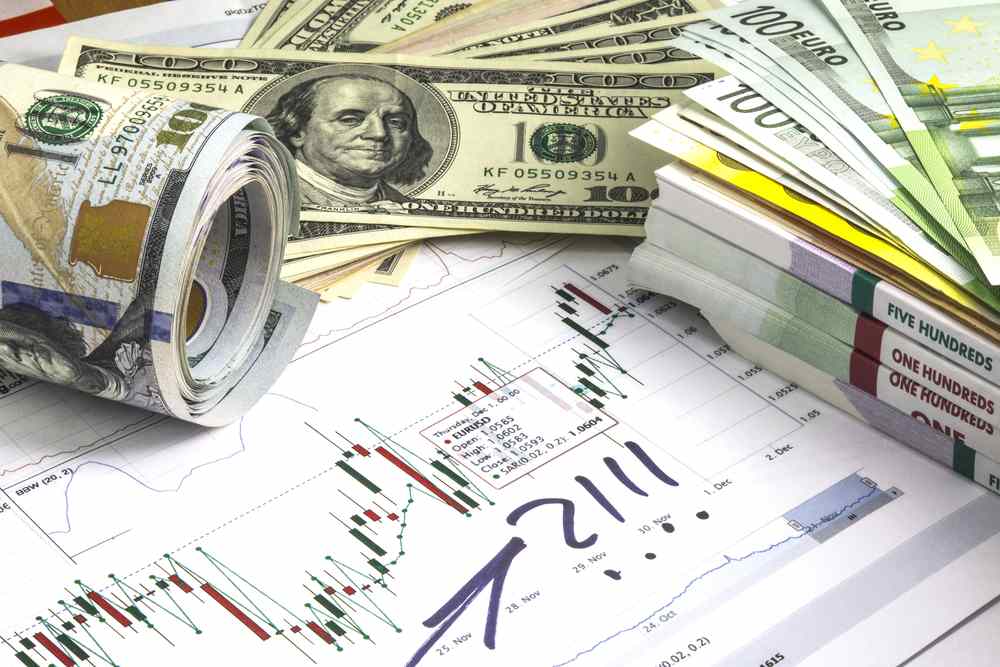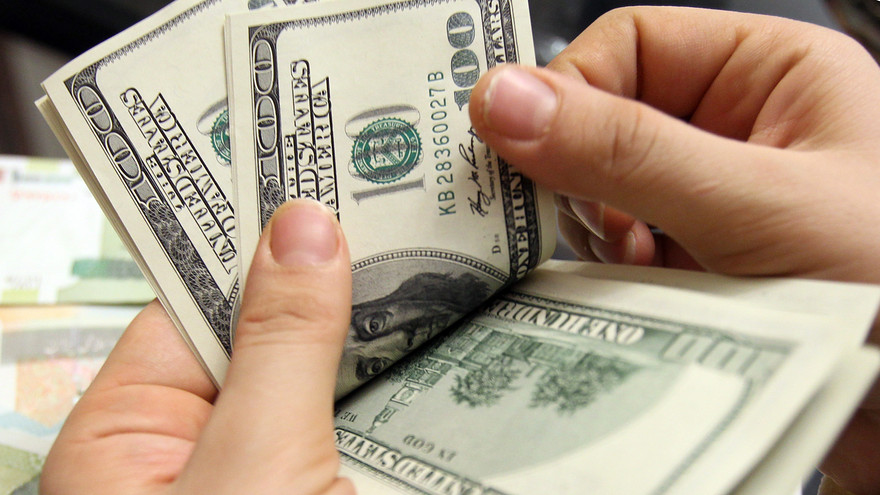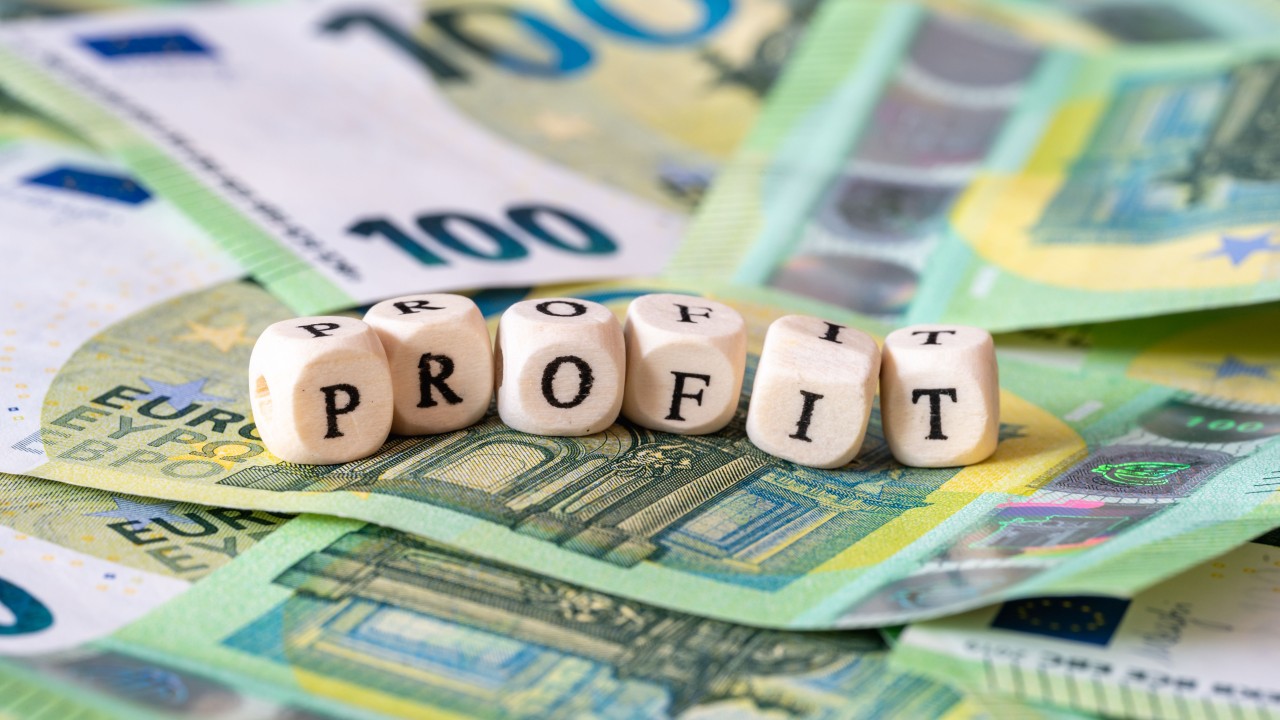You have $1,000 in a trading account and a head full of Day Trading Tips. You may wonder what that money becomes in a month or a year. Many traders chase significant returns, but real profit depends on risk management, position sizing, win rate, trading costs, slippage, and market volatility.
This guide shows likely daily and monthly gains, possible drawdowns, how leverage and fees change outcomes, and which strategies, like scalping or momentum trading, fit a small account so you can set clear expectations. To help you test those ideas with less personal risk, Goat Funded Trader offers a prop firm option that can provide larger capital and straightforward rules so you can see how $1,000 strategies scale.
Is Starting Day Trading with $1000 a Good Idea?

Day trading with $1,000 is a realistic option for beginners, especially in forex and specific crypto markets. Many brokers allow accounts starting at just $100, but having $1,000 gives you added flexibility to manage trades and risk better than the bare minimum. You’ll be able to open trades with more conservative position sizes and withstand small market losses, which is crucial for maintaining consistency and avoiding blowing up your account.
With $1,000, you can open real trades and learn fast, especially in forex, crypto, CFDs, and micro futures. Brokers accept small accounts and fractional shares, making stocks accessible, but U.S. equities face the $25,000 pattern day trader rule for frequent margin trades. You must accept limited position size, tighter risk budgets, and a higher sensitivity to losses when you trade a small account.
Forex and many crypto pairs let you use small capital because of high liquidity and low minimums. Micro E mini futures and some brokers that offer fractional shares also fit $1,000 accounts. Options trade on small accounts, too, but assignment and rapid premium decay raise risk. Trading costs matter more with small capital: spreads, commissions, and slippage can turn a slight edge into a losing edge if you ignore them. Expect modest returns and wide variability. A consistent 1% gain per trading day equals roughly 22% over 20 trading days when compounded, which would turn $1,000 into about $1,220.
Targeting 3% per day pushes results into significant gains but also into a much higher probability of large drawdowns. Look at trade expectancy to set realistic goals. For example, if you risk 1% per trade ($10) with a 50% win rate and a 12 risk-to-reward, your expectancy per trade is 0.5% of account value. Taking 20 such trades a month yields an expected 10% monthly return, but that relies on discipline, execution, and a consistent edge.
Keep risk per trade small, typically 0.25% to 1% of capital. That equals $2.50 to $10 risk on $1,000 when you follow a stop placement tied to volatility. Cap max drawdown at a figure you can tolerate, for example 10% to 20%, to avoid emotional decisions. Use stop orders and predefine position size before entering. Leverage amplifies returns and losses; use it sparingly and always model worst-case scenarios.
Day trading takes significant time, discipline, and emotional control. Learning curves are steeper with smaller accounts because each loss feels larger relative to your total funds. Most experts recommend using $1,000 as a “tuition fee” for the markets, expect to learn fundamentals, and test strategies rather than instantly make a living.
Get 25-30% off Today - Sign up to Get Access to Up to $800 today.
Goat Funded Trader is a prop firm that gives you access to simulated accounts up to $800K with the most trader-friendly conditions in the industry, including no minimum targets, no time limits, triple paydays, and up to 100 percent profit split. Join over 98,000 traders who have collected more than $9.1 million in rewards, all backed by our 2-day payment guarantee with a $500 penalty for delays; choose customizable challenges or instant funding and sign up to Get Access to up to $800 today with 25 to 30 percent off.
Can You Make a Living Day Trading With $1,000?

Expecting to replace a full-time income from a $1,000 trading account requires math and realism. To generate $3,000 a month from $1,000, you would need returns of several hundred percent per year, which most traders never achieve. What daily return would that require, and is it realistic given typical market volatility and fees?
Day trading with a small account like $1,000 is a topic that attracts many aspiring traders. The idea of turning a modest sum into a full-time income is appealing but comes with significant challenges and risks. Firstly, day trading is notoriously difficult. Most traders lose money rather than make consistent profits. For those who do succeed, average daily returns tend to be modest, typically anywhere from 0.033% up to 0.13%.
When compounded over a month, this growth translates roughly to 1% to 10%. While some exceptional traders report higher returns, these are the exception, not the norm. In other words, making a living solely from day trading with $1,000 means you need consistent discipline and realistic expectations. Significant, fast gains are unlikely, and chasing them often leads to quick losses.
The core difficulty in trading with a small account is managing risk. Without clear rules about how much you are willing to lose per trade, it’s easy to get caught in emotional decision-making. Emotional trading often leads to overtrading or holding losing positions too long, which can quickly erode your capital.
Developing and adhering to a disciplined trading plan, including the use of stop-loss orders and position sizing, is essential. This helps limit losses and preserves capital during losing streaks, allowing for continued trading and learning. Growing $1,000 into a sustainable income is a marathon, not a sprint. Experienced traders might achieve monthly returns between 5% and 15%, but these gains require consistent strategy application and adaptability to changing market conditions.
Compounding returns gradually allows your account to grow over time, but it demands patience and emotional control. Immediate large profits are unrealistic, and sudden market swings will test your resilience. The key is to protect your capital first and strive for steady gains. Starting with $1,000 can be a valuable learning experience. It forces you to focus on money management and risk control more rigorously than someone with a larger capital buffer.
The main takeaway is to set achievable goals:
- Expect small daily or monthly returns rather than huge windfalls.
- Use stop losses and limit your risk per position.
- Avoid overleveraging.
- Keep emotions in check, stick to your plan.
- Continuously refine your approach based on experience and market feedback.
Checklist Before Trying to Replace Income
Create a written trading plan, define your edge, and backtest it over different market conditions. Set clear risk rules, prepare for fees and taxes, and confirm you have more trading income or savings to cover living costs during learning. Will you stick to this checklist under pressure and keep learning from each trade?
Related Reading
- Can You Make Money Day Trading
- How Old Do You Have to Be to Day Trade
- Options Trading vs Day Trading
- Day Trading Success Stories
- Day Trading Crypto vs Stocks
- Day Trading Psychology
- Day Trading as a Side Hustle
- Why is Day Trading Restricted
Practical Strategies to Grow a $1,000 Trading Account

Set Strict Risk Limits Per Trade
To protect your capital, never risk more than 1-2% of your account on a single trade. For a $1,000 account, this means risking no more than $10 to $20 per trade. Keeping risk low helps you survive losing streaks and prevents catastrophic losses that can wipe out your account.
Choose a Trading Style That Fits You
Pick a trading style matching your personality and schedule. Scalping involves quick trades for small profits and suits those who can monitor markets constantly. Swing trading holds positions for days, capturing bigger moves, ideal if you can’t watch the market all day. Finding a style you can stick with is key to consistency.
Use Stop-Loss Orders Religiously
Always set stop-loss orders to exit trades that move against you automatically. This practice keeps your losses controlled and ensures your risk management plan is executed without emotional interference.
Leverage Cautiously
Using margin or leverage can amplify returns but also increase risk. If you decide to trade on margin, start very small and thoroughly understand the risks involved. Never use leverage that could cause losses you cannot afford.
Keep a Detailed Trading Journal
Recording every trade with reasons for entry, exit points, and outcomes helps you track your progress. Over time, reviewing your trades will reveal patterns and areas for improvement.
Focus on High-Quality Trade Setups
Avoid overtrading by only taking trades that align with your strategy and offer a favorable risk-to-reward ratio, ideally at least 1:3. Trading fewer high-quality setups is better than chasing every minor market movement.
Regularly Review and Adapt Your Strategy
Set aside time weekly or monthly to review your trades. Analyzing what worked and what didn’t allows you to fine-tune your approach in response to changing market conditions.
Control Your Emotions
Trading with a small account can be stressful. Avoid revenge trading after losses, resist greed, and always stick to your plan. Emotional discipline is crucial for long-term trading success.
Additional Tips for Growing a $1,000 Account
Consider starting with major currency pairs or markets with low spreads to keep costs down.
Patience is essential; do not rush to get rich quickly, but focus on steady gains. Some traders aggressively compound gains by risking a larger percentage of their account per trade, but this increases risk and should be approached with caution. Proprietary trading firms offer an option to trade larger sums if you pass their evaluation, allowing you to grow with less personal capital risk.
Get 25-30% off Today - Sign up to Get Access to Up to $800 today.
Goat Funded Trader is a prop firm that gives you access to simulated accounts up to $800K with the most trader-friendly conditions in the industry, including no minimum targets, no time limits, triple paydays, and up to 100 percent profit split. Join over 98,000 traders who have collected more than $9.1 million in rewards, all backed by our 2-day payment guarantee with a $500 penalty for delays; choose customizable challenges or instant funding and sign up to Get Access to up to $800 today with 25 to 30 percent off.
Related Reading
- Day Trading Indices
- What is Liquidity in Day Trading
- Can You Start Day Trading With $100
- Day Trading as a Career
- Why is Pattern Day Trading Illegal
- Are Day Trading Courses Worth It
- Best Brokerage for Day Trading
- Best Cryptos for Day Trading
- What is Day Trading Buying Power
- Best Time Frame for Day Trading
Common Mistakes Traders Make When Starting With a Small Account

Trading Without a Plan
One of the biggest mistakes is jumping into trades without a defined strategy. Experienced traders always have a clear plan outlining entry and exit points, capital allocation, and loss limits. Without this framework, beginners may act impulsively, chase losses, or abandon trades prematurely, leading to inconsistent results.
Overleveraging the Account
Leverage lets traders control larger positions with less capital, but it is a double-edged sword. Using excessive leverage can quickly erode a small account, as even minor adverse price moves cause significant losses. New traders are often attracted to high leverage ratios but underestimate the risks, which can wipe out their funds in moments.
Holding Losing Trades Too Long
Emotions often compel traders to keep losing positions "in hope of a turnaround," which can decimate their capital. Cutting losses early using stop-loss orders is critical. Letting losses run often costs more than accepting smaller, controlled losses, jeopardizing overall account health.
Unrealistic Expectations
Beginners sometimes expect quick, large profits and treat trading like gambling. This mindset leads to reckless decisions without proper skill development and risk management. Trading requires patience, discipline, and a long-term perspective to succeed gradually.
Following the Crowd Blindly
Chasing hot stocks or mimicking popular trades without research often results in buying at tops or shorting bottoms. Successful traders know when to follow trends and when to exit crowded trades. New traders’ herd mentality leads them into overvalued or overly risky positions.
Overtrading and Lack of Focus
Making too many trades too soon can overload cognitive capacity and cause mistakes. Overtrading also increases transaction costs and risk exposure. It’s better to focus on a few setups and master them rather than diversifying widely with limited capital.
Ignoring Risk-Reward Ratios
Neglecting to assess how much reward justifies the risk leads to poor trade evaluation. A good risk-reward ratio means aiming for profits that exceed potential losses. This discipline improves profitability even if the win rate is moderate.
Not Learning from Mistakes
Failing to record and analyze trading performance prevents improvement. Keeping a trading journal helps identify what works, what doesn’t, and adjust strategies accordingly.
Proprietary Trading Firms and Leveraged Trading Opportunities to Consider

Managing a trading account with a limited budget, like $1,00,0, can be challenging, especially when aiming to grow your balance significantly. However, there are two strategic options traders can explore to amplify their trading power: joining proprietary trading firms or leveraging margin trading. Both avenues offer unique benefits and risks, which are essential to understand before diving in.
1. Margin Trading
Margin trading allows traders to leverage borrowed capital to control much larger positions than their actual account size. For example, if a brokerage offers a 30:1 leverage ratio, a $1,000 deposit enables trading as much as $30,000 in currency. This method can significantly enhance potential profits but also increases exposure to losses. Because adverse price movements can quickly wipe out your balance, and in some cases, leave you owing more than you invested, managing risk is essential. Employing tools like tight stop-loss orders and developing a disciplined exit strategy helps protect your account when markets move unpredictably. Margin trading works best for experienced traders who understand volatility and can react rapidly to changing market conditions.
2. Proprietary Trading Firms
Proprietary trading firms, or prop firms, offer a solution for traders looking to work with larger sums of money while limiting personal financial risk. These firms provide qualified traders access to substantial amounts of their capital, sometimes reaching hundreds of thousands of dollars, if the trader passes their assessment process and demonstrates proficient risk management. Once funded, the trader shares a portion of the profits with the firm.
The prop firm absorbs almost all losses, meaning your risk beyond the evaluation fee is minimal. Popular companies like Goat Funded Trader have built a reputation on robust risk control, top-tier technology, and fair profit splits, serving traders who prove consistency and discipline. The firm has built trust with a global user base, providing educational resources and scaling plans for account growth. The firm’s approach centers on allowing skilled traders to trade larger sums with very competitive profit shares and a monthly salary for high performers.
Goat Funded Trader is a prop firm that gives you access to simulated accounts up to $800K with the most trader-friendly conditions in the industry, including no minimum targets, no time limits, triple paydays, and up to 100 percent profit split. Join over 98,000 traders who have collected more than $9.1 million in rewards, all backed by our 2-day payment guarantee with a $500 penalty for delays; choose customizable challenges or instant funding and sign up to Get Access to up to $800 today with 25 to 30 percent off.
Related Reading
- Best Rsi Settings for Day Trading
- Best Moving Average for Day Trading
- Day Trading Checklist
- Day Trading Technical Analysis
- Best Markets for Day Trading
- Day Trading Indicators
- Stocks for Day Trading
- Day Trading Books
- Best Tools for Day Trading
- Day Trading Rules
- Day Trader Salary
- Best Day Trading Stocks
- How to Day Trade for a Living
- Day Trading Patterns
- Best Stocks to Day Trade
- Is Day Trading Legal
Get 25-30% off Today - Sign up to Get Access to Up to $800K Today

Goat Funded Trader gives access to simulated accounts up to $800K with some of the most trader-friendly conditions in the industry. You will find no minimum targets and no time limits, and you can collect triple paydays with up to 100 percent profit split. Over 98,000 traders have collected more than $9.1 million in rewards, and the program backs payouts with a 2-day payment guarantee that includes a $500 penalty for delays.
Choose How You Want to Get Funded
Pick a path that tests your skill through customizable challenges or start trading immediately with instant funding. You can scale position sizes and access larger buying power while keeping your capital protected. Ready to try it? Sign up to get access to up to $800K today with 25 to 30 percent off.
.svg)
.avif)



.avif)





.svg)

.svg)